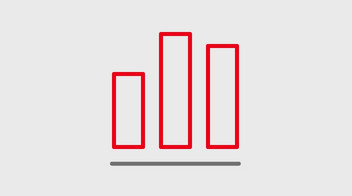Assessment of the risk situation in 2024
The risk situation is assessed on the basis of our RMS. Very likely opportunities and risks (probability of occurrence > 70%) have already been dealt with in the forecast of EBIT development in the 2024 financial year. The system is based on the requirements of the KonTraG and is continually evolving.
- For the forecast of EBIT development in the 2024 financial year, risks (taking into consideration countermeasures) amounting to € 1.4 billion existed as of December 31, 2023 (thereof very likely: € 0.0 billion). Depending on the progress and conclusion of current collective bargaining negotiations with the GDL, these may result in significant additional burdens.
- The risk assessment does not include any risks from the collective bargaining negotiations in 2024.
- The main risk focuses (probable risks) are in the categories “Production and technology” and “Economic climate, market and competition.” These risks result mainly from infrastructure financing, market development in logistics (in particular the development of freight rates) and rail freight transport, as well as cost increases in large projects. In addition, there are further risks from the development of demand in passenger transport and from possible developments in ETCS projects, transformation projects and the development of operational quality.
- Opportunities beyond the EBIT forecast amount to € 0.2 billion (thereof very likely: € 0.0 billion). These opportunities exist, for example, in the “Production and technology” category.
The equity increase planned by the Federal Government for 2024 depends on income from the disposal of Federal Government shareholdings, but is expected to take place no later than July 15, 2024, provided that at least € 2 billion in disposal proceeds have been achieved. An amendment to the BSWAG and a supplement to the LuFV are also required in order to implement the funding measures in 2024. Risks also exist due to lower funding for infrastructure expenses from the Federal Government, such as if it is considered that planned expense topics are not eligible for grants.
Third-party evaluation is also an important indicator for overall risk assessment. In addition to the internal risk assessment, DB Group’s creditworthiness and aggregate default risk are assessed by credit rating agencies. Their external assessments of DB Group’s total risk position are reflected in the good credit ratings. In the area of sustainability, potential risks are externally assessed and evaluated by ESG rating agencies.
In terms of organization, we have created the conditions necessary to enable the early identification of possible risks. Our continuous risk management and the active management of key risk categories contribute to limiting risks. Key strategic opportunities and risks were identified at the business unit level and recorded in the course of the strategic process for operationalization with measures. Our analyses of opportunities and risks, countermeasures, hedging and precautionary measures, together with the opinion of the Management Board based on the current risk assessment and our mid-term planning (MTP), indicate that there are no risks that, individually or jointly, could have an impact on the net assets, financial position and income situation of DB Group, and that would pose a threat to DB Group as a going concern.



